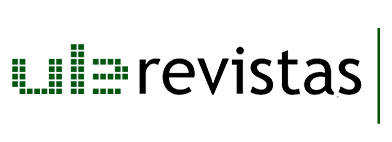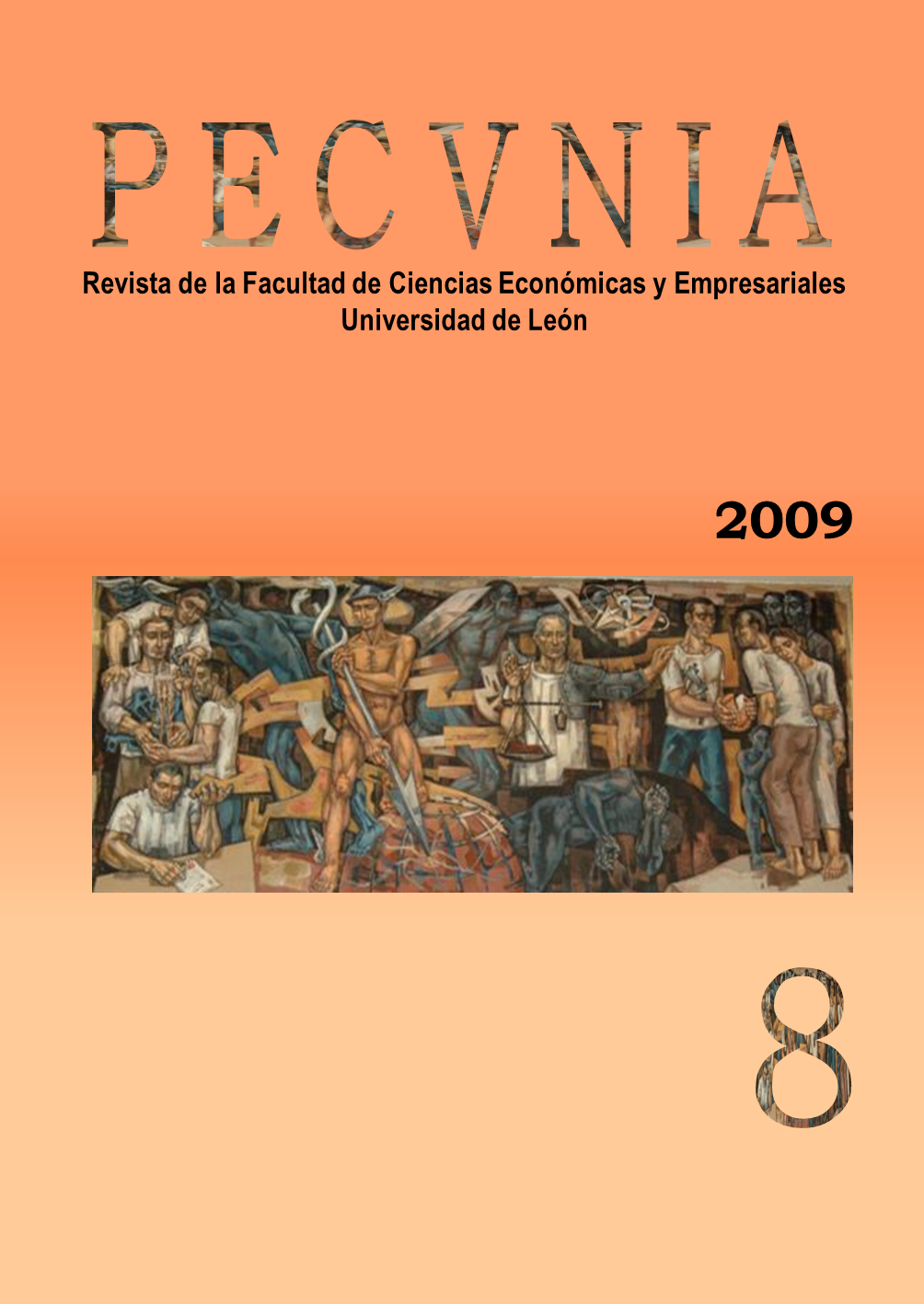Os activos intangíveis nas contas das empresas do PSI 20 : uma evidência empírica
DOI:
https://doi.org/10.18002/pec.v0i8.679Palabras clave:
Activos intangibles, Bolsa, Capital intelectual, Intangible assets, Stock exchange, Intellectual capitalResumen
En la actualidad podemos enumerar como activos intangibles contables las patentes, marcas, derechos de autor, etc. Sin embargo, hay otros cuya existencia se reconoce ampliamente y que, a pesar de no estar identificados o medidos, también contribuyen a los resultados de una entidad, como el goodwi II o el capital intelectual, entre otros.La Contabilidad de activos intangibles ha cobrado impulso en las últimas décadas debido a los cambios que se han producido en el mundo de los negocios. Los avances en la industria y, en concreto la sociedad de la información, disponen de activos intangibles que son de aplicación en el mundo de los negocios.El reconocimiento de los activos intangibles en los libros de las entidades puede ser el siguiente paso, en concreto en lo que se refiere a ciertos tipos de negocios, como el de la industria del conocimiento.En el presente estudio se analizan los factores que influyen en la divulgación e información de activos intangibles voluntarios y obligatorios de un número de empresas portuguesas que cotizan en bolsa. Asimismo, exploramos la línea de pensamiento actual sobre activos intangibles y cómo se evalúan, reconocen y presentan estos recursos en los estados financieros de las empresas portuguesas.Today, as intangible assets recognized by the accounting, we can list the patents, trademarks, copyrights, etc. But there are other intangible assets whose existence is widely acknowledged that although they have not yet been identified or measured, also contribute to the results of an entity such as Goodwill or the Intellectual Capital, among others.Accounting for intangible assets gained prominence in the past decades due to changes that are occurring in the business world. The industrial revolution and, in particular, the information society, have the resources in front of the intangible world of business.The recognition of intangible assets on the books of the entities can be the next step forward especially for certain types of business such as the industry of knowledge. In this study we analyze the factors influencing the disclosure and information, mandatory and voluntary (intangible assets), of a number of Portuguese companies whose securities are traded on stock exchange. We also explore the current state of thinking on intangible assets and how those resources are being evaluated, recognized and presented in financial statements of Portuguese companies.
Descargas
Citas
ALMEIDA, Pedro J.M. (2003) Da capacidade empreendedora aos activos intangíveis no processo de criação de empresas do conhecimento. Universidade Técnica de Lisboa, IST. Tese de mestrado em Engª e Gestão de Tecnologia. http://purl.pt/6547. Consult. 29 Mai. 2007].
BROOKING, A. (1996) Intellectual Capital. Core Asset for the Third Millennium Enterprise. London: International Thomson Business Press.
BUENO CAMPOS, E. y C. MERINO MORENO (2007) "El capital intelectual y la creación de empresas en la sociedad del conocimiento", Encuentros multidisciplinares, 9, nº 26, pp. 37-46.
EDVINSSON, L. y M.S. MALONE (1999) El Capital Intelectual – Como identificar y calcular el valor de los recursos intangibles de su empresa. Barcelona: Ediciones Gestión 2000, S.A.
EUROFORUM (1998) Proyecto Intelect. Medición del Capital Intelectual. Madrid: Euroforum.
GAMA, N.P. da e M.M. da SILVA (2006) Activos intangíveis dos sistemas de informação [www.col.tagus.ist.utl.pt. Junho 2008].
GUTIÉRREZ, F.R. (2004) Medición y valoración de activos intangibles en los estados financieros. Caso: empresas de la industria biotécnica. [www.monografias.com. Maio 2008].
INTERNATIONAL ACCOUNTING STANDARDS BOARD (IASB) (2004) "Estrutura
Conceptual para a Apresentação e Preparação de Demonstrações Financeiras". OROC e IASB (eds.) Normas Internacionais de Relato Financeiro (IFRSsTM) incluindo as Normas Internacionais de Contabilidade (IASsTM), pp.19-46.
INTERNATIONAL ACCOUNTING STANDARDS BOARD (IASB) (2004) "Norma Internacional de Contabilidade (IAS) n.° 38 – Activos Intangíveis". OROC e IASB (eds.) Normas Internacionais de Relato Financeiro (IFRSsTM) incluindo as Normas Internacionais de Contabilidade (IASsTM), pp.1.187–1.228.
KAPLAN, R. y D. NORTON (1996) "Strategic Learning and the Balanced Scorecard", Strategy and Leadership, September/October, pp. 18-24.
KAPLAN R.S. & D.P. NORTON (1996) The Balanced Scorecard: Translating Strategy into Action. Harvard Business School Press.
LEV, B. (2000) Knowledge and Shareholder Value: Working Paper. Stern School of Business, New York University.
LUTHY, D.H. (1998) Intellectual Capital and Its Measurement [http://www 3.bus.osakacu].
MARQUES, Maria da Conceição da Costa (2005) "O capital intelectual no sector público". Comunicação apresentada nas XV Jornadas Hispano- Lusas de Gestão Científica, Sevilha. Acessível no Instituto Superior de Contabilidade e Administração de Coimbra. Coimbra. Portugal.
NAVAZA, Calos L.; M.A.L. CABARCOS (2007) Empresas Valiosas – Do Capital Intelectual à Criação de Valor. Porto: Vida Económica.
PUCICH, M.; E.C. MONZÓN y L. SOSISKY (2001) "Los Recursos Intangibles en la Información Contable", XVI Jornadas de Contabilidad, XIV de Auditoria y III de Gestión y Costos. Colegio de Graduados en Ciencias Económicas de la Capital Federal. Buenos Aires, Argentina.
RUSSO, João (2006) Balanced Scorecard para PME. Lisboa: Lidel.
SERAPICOS, Elizabete (2003) "A importância estratégica da gestão do conhecimento", Revista TOC, 38, pp. 56-57.
SERRANO CINCA, C. y F. CHAPARRO (2001) Los activos intangibles en la Contabilidad: medición y valoración. [http://www.5campus.com/ leccion/capint1. Consult. 10/12/2002].
STEWART, T.A. (1998) Capital Intelectual: a nova riqueza das organizações. Lisboa: Edições Sílabo.
SVEIBY, K.E. (1997a) The Invisible Balance Sheet: Key Indicators for Accounting, Control And Evaluation Of Know-How Companies. Stockholm: The Konrad Group.
SVEIBY, K. (1997b) The New Organizational Wealth: Managing and Measuring Knowledge Based Assets. San Francisco, CA: Berrett Koehler.
SVEIBY, K. (1997c) "The Intangible Assets Monitor", Journal of Human Resource Costing and Accounting, 2 (1), pp. 73-97.
SVEIBY, K. (2001) What is Knowledge Management? http://www.sveiby.com/articles/knowledge_management_articles.html
SVEIBY, K. (2005) Methods for Measuring Intangible Assets http://www.sveiby.com/articles/IntangibleMethods.htm
Descargas
Publicado
Cómo citar
Número
Sección
Licencia
Derechos de autor 2009 Maria da Conceiçâo da Costa Marques

Esta obra está bajo una licencia internacional Creative Commons Atribución-NoComercial-CompartirIgual 4.0.
Los autores que publican en esta revista están de acuerdo con los siguientes términos:- Los autores ceden de forma no exclusiva los derechos de explotación (reproducción, distribución, comunicación pública, transformación) a la Universidad de León, por lo que pueden establecer, por separado, acuerdos adicionales para la distribución no exclusiva de la versión de la obra publicada en la revista (por ejemplo, alojarlo en un repositorio institucional o publicarlo en un libro), con un reconocimiento de su publicación inicial en esta revista.
- Este trabajo se encuentra bajo la Creative Commons Attribution-NonCommercial-ShareAlike 4.0 International License. Puede consultarse desde aquí la versión informativa y el texto legal de la licencia.
- Se permite y se anima a los autores a difundir electrónicamente las versiones pre-print (versión antes de ser evaluada) y/o post-print (versión evaluada y aceptada para su publicación) de sus obras antes de su publicación, ya que favorece su circulación y difusión más temprana y con ello un posible aumento en su citación y alcance entre la comunidad académica.












